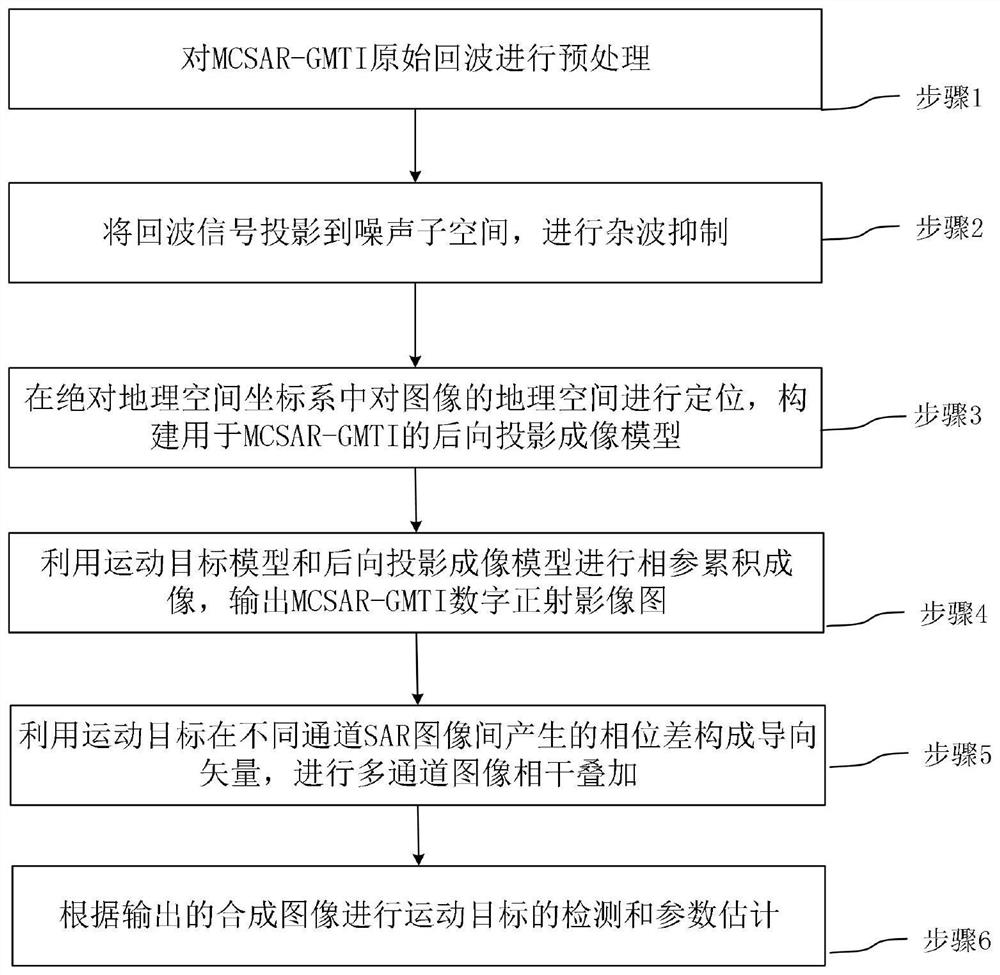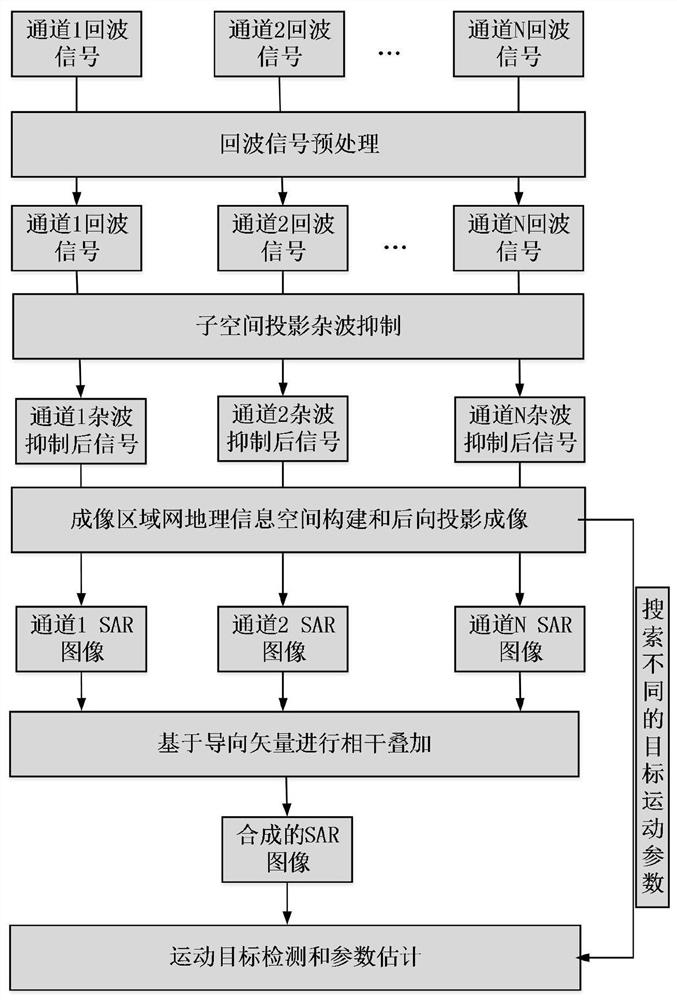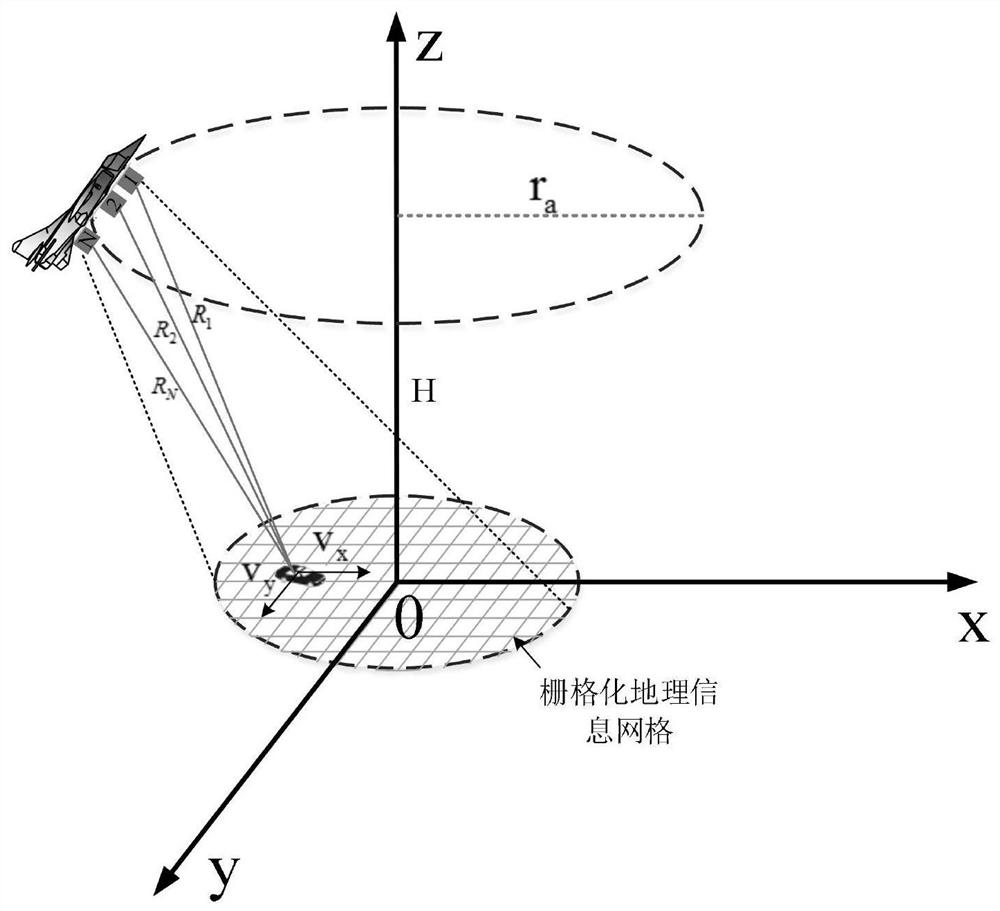Airborne multichannel circular SAR moving target detection and estimation method
A moving target, multi-channel technology, applied in the field of airborne multi-channel circular SAR moving target detection and estimation, can solve the problems of aggravation, high intensity, loss of target signal-to-noise ratio, etc., and achieve high motion compensation accuracy and environmental adaptability. Strong, stable detection performance
- Summary
- Abstract
- Description
- Claims
- Application Information
AI Technical Summary
Problems solved by technology
Method used
Image
Examples
Embodiment Construction
[0017] The technical solutions in the embodiments of the present invention will be clearly and completely described below in conjunction with the accompanying drawings in the embodiments of the present invention. Obviously, the described embodiments are only part of the embodiments of the present invention, not all of them. Based on the embodiments of the present invention, all other embodiments obtained by persons of ordinary skill in the art without making creative efforts belong to the protection scope of the present invention.
[0018] The invention discloses a method for detecting and estimating an airborne multi-channel circular SAR moving target. Under the rectangular coordinate system of the geographic information space, the clutter is suppressed based on the subspace projection of the original data domain, and then the MCSAR is carried out by using the backward projection imaging model. Imaging, completing processing steps such as registration and phase unwrapping at t...
PUM
 Login to View More
Login to View More Abstract
Description
Claims
Application Information
 Login to View More
Login to View More - R&D
- Intellectual Property
- Life Sciences
- Materials
- Tech Scout
- Unparalleled Data Quality
- Higher Quality Content
- 60% Fewer Hallucinations
Browse by: Latest US Patents, China's latest patents, Technical Efficacy Thesaurus, Application Domain, Technology Topic, Popular Technical Reports.
© 2025 PatSnap. All rights reserved.Legal|Privacy policy|Modern Slavery Act Transparency Statement|Sitemap|About US| Contact US: help@patsnap.com



